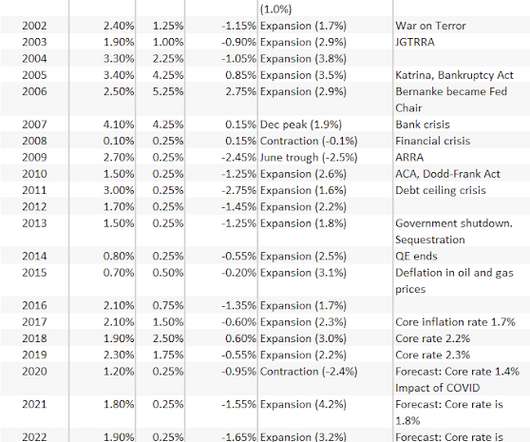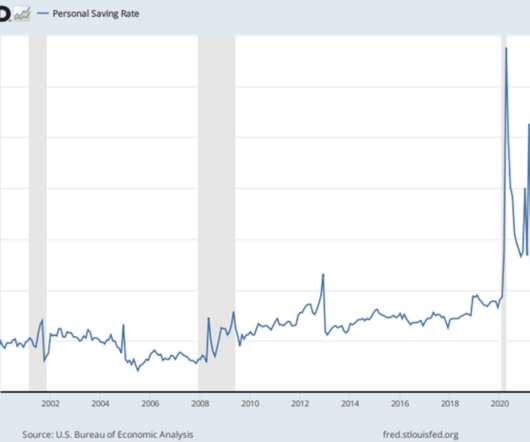Guest Post: 2Q Financial Markets and Economics Update - Second Quarter 2024
Jeff For Banks
JULY 1, 2024
Financial Markets Update – Second Quarter 2024 A dream vacation! We have many examples, notably 2000-2001, 2006-2008, and 2019, when restrictive rates impaired growth and recession followed. One of the components of the LEI which is up strongly is the S&P 500 stock market index, by +14.5%. Summer is here. Thanks for reading!






































Let's personalize your content